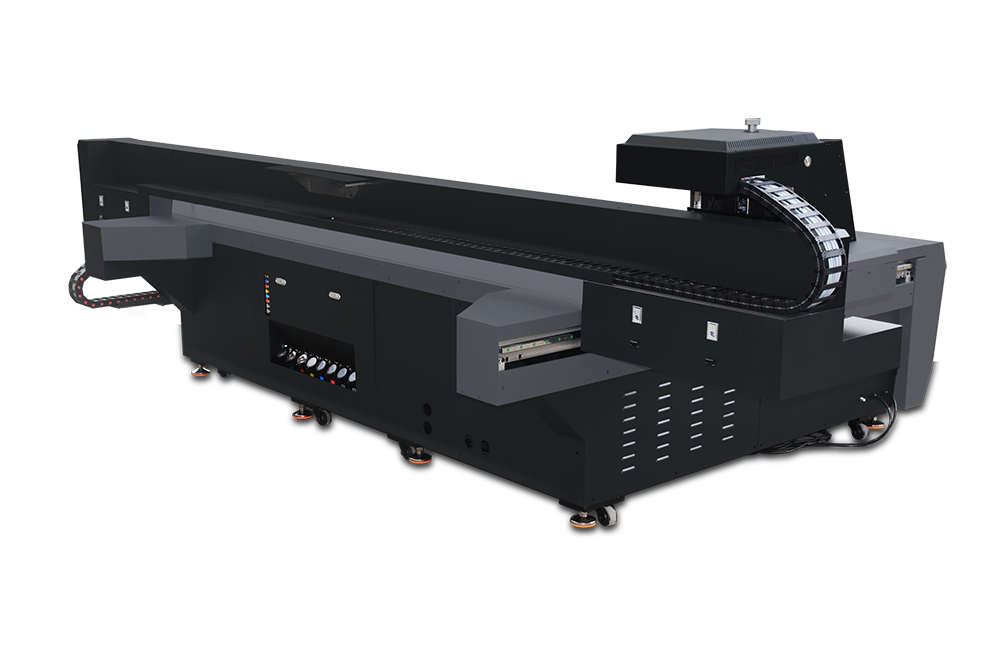Technical Tips for Maintaining Printhead Health in UV Flatbed Printers
UV flatbed printers have revolutionized the printing industry, offering high-quality, durable prints on a wide range of substrates. From rigid materials like glass and metal to flexible options such as vinyl and fabric, these printers have become indispensable tools for businesses across various sectors. However, the performance and longevity of a UV flatbed printer largely depend on the health of its printhead. A well-maintained printhead ensures consistent print quality, reduces downtime, and extends the life of the printer. In this article, we will delve into some technical tips for maintaining printhead health in UV flatbed printers.

Understanding the Printhead
Before diving into maintenance tips, it’s essential to understand the basics of a UV flatbed printer’s printhead. The printhead is the core component responsible for depositing ink onto the substrate. It contains numerous nozzles that eject tiny droplets of ink in a controlled manner to create images and text. UV flatbed printers use a specific type of ink that cures almost instantly when exposed to ultraviolet light, which allows for quick and efficient printing.
The printhead is a delicate and precise instrument, susceptible to clogging, drying out, and damage if not handled properly. Therefore, maintaining its health requires a combination of regular cleaning, proper storage, and careful handling.
Regular Cleaning
One of the most crucial aspects of printhead maintenance is regular cleaning. Over time, ink residue, dust, and debris can accumulate on the printhead nozzles, leading to clogs and reduced print quality. To prevent this, follow these steps:
Daily Cleaning Routine: At the end of each day’s work, perform a quick cleaning cycle using the printer’s built-in cleaning function. This process flushes out any remaining ink and removes debris from the nozzles.
Weekly Deep Clean: In addition to daily cleaning, conduct a more thorough cleaning once a week. This may involve manually cleaning the printhead with a soft, lint-free cloth dampened with a mild cleaning solution recommended by the printer manufacturer.
Use of Cleaning Solutions: Always use cleaning solutions specifically designed for UV flatbed printer printheads. Avoid using harsh chemicals or abrasives that can damage the nozzles.
Nozzle Check: After cleaning, run a nozzle check to ensure that all nozzles are firing correctly. If you notice any missing or misaligned dots, repeat the cleaning process or consult the printer’s manual for further troubleshooting.
Proper Storage
When the printer is not in use for extended periods, proper storage of the printhead is vital. Here are some tips:
Protect from Dust: Cover the printer and printhead with a dust cover to prevent dust and debris from settling on the nozzles.
Humidity Control: Store the printer in a controlled environment with moderate humidity levels. Too much or too little humidity can affect the ink’s viscosity and lead to clogging.
Avoid Temperature Extremes: Extreme temperatures can cause the ink to expand or contract, leading to leaks or clogs. Keep the printer in a temperature-controlled room to maintain optimal ink flow.
Power Down Properly: Always follow the manufacturer’s instructions for shutting down the printer.Abruptly turning off the power can cause ink to dry in the nozzles, leading to clogs.
Careful Handling
The printhead is a fragile component, and careless handling can result in damage. Here are some guidelines for careful handling:
Avoid Touching the Nozzles: Never touch the nozzles directly with your fingers or any other object. Oils from your skin or dirt from your hands can contaminate the nozzles and cause clogs.
Use Gloves: If you need to handle the printhead manually, wear clean, lint-free gloves to prevent contamination.
Secure Installation: Ensure that the printhead is securely installed in its carriage. A loose printhead can cause misalignment and damage during printing.
Transport with Care: If you need to transport the printer, follow the manufacturer’s guidelines for securing the printhead. Use proper packaging materials to prevent shock and vibration during transit.
Ink Management
Proper ink management is another key aspect of maintaining printhead health. Here are some tips:
Use High-Quality Ink: Always use ink recommended by the printer manufacturer. Low-quality ink can contain impurities that clog nozzles and damage the printhead.
Avoid Ink Expiration: Check the expiration date on ink cartridges and use them before they expire. Expired ink can change in composition, leading to clogs and poor print quality.
Prime the Printhead: When installing a new ink cartridge or after a long period of non-use, prime the printhead to ensure that ink flows smoothly through the nozzles.
Regular Ink Replacement: Replace ink cartridges when they are low or empty. Running the printer with empty cartridges can cause air bubbles to enter the ink system, leading to clogs and poor print quality.
Software and Firmware Updates
Finally, don’t overlook the importance of software and firmware updates in maintaining printhead health. Printer manufacturers often release updates to improve print quality, fix bugs, and address compatibility issues. Here are some tips:
Check for Updates Regularly: Visit the manufacturer’s website or use the printer’s built-in update function to check for software and firmware updates.
Install Updates Promptly: When an update is available, install it promptly to ensure that your printer is running the latest version of software and firmware.
Read Release Notes: Before installing an update, read the release notes to understand what changes and improvements it brings. This can help you troubleshoot any issues that may arise after the update.
In conclusion, maintaining printhead health in UV flatbed printers requires a combination of regular cleaning, proper storage, careful handling, ink management, and software/firmware updates. By following these technical tips, you can ensure that your printer delivers consistent, high-quality prints and extends its lifespan. Remember to always consult the printer’s manual for specific instructions and recommendations from the manufacturer. With proper maintenance, your UV flatbed printer will continue to be a valuable asset for your business.
